
Introduction
This report summarizes noise measurements of Xprize related noise on behalf of FAA/AST/ICF International in Las Cruces, New Mexico on October 20-21, 2006. The Xprize event demonstrated various rockets, lunar lander test vehicles, military aircraft, and other space travel related exhibits. Other noise sources at the site included an expansive sound reinforcement/public address system, crowd noise, and vehicular noise.
The purpose of the noise measurements was to determine if this event would cause 1) a significant noise impact, 2) hearing damage at the spectator location, and 3) noise impacts at the nearest residential location. To address these concerns, an automated noise monitor was placed near spectators (Site 1) closest to the noise producing activities and another monitor was located in Fairacres (Site 3), the nearest residential community. In addition, a monitor was placed approximately half way (Site 2) between Sites 1 and 3 to allow for the future calculation of acoustical attenuation rates of various rocket activities. This information is not needed at this time, but it could be used in the future to develop noise contour footprints of various rocket launch activities.
Figure 1 shows a map of the Las Cruces airfield, Xprize launch pad locations, and the noise monitor sites 1, 2, and 3.
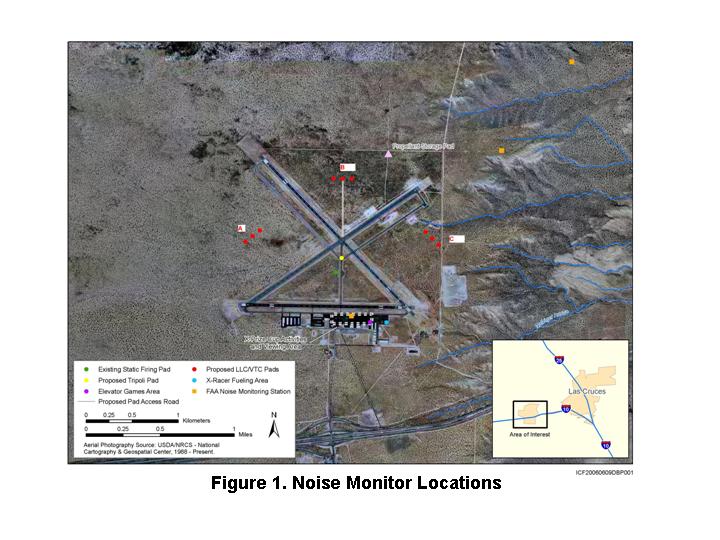
Data Collection and Results
Figures 2 and 3 show the microphone and noise monitor setup at the spectator location at Site 1. Figure 4 shows the noise monitor set up at Site 2. Figure 5 shows the noise monitor setup near 8125 Constitution Street in Fairacres.
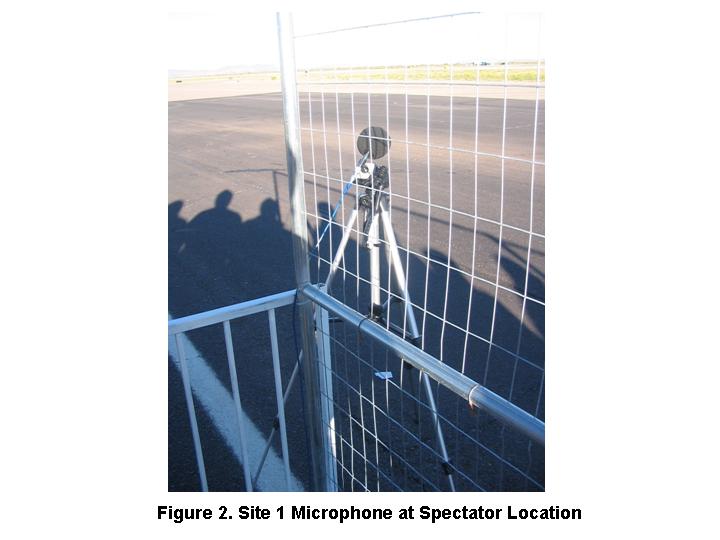
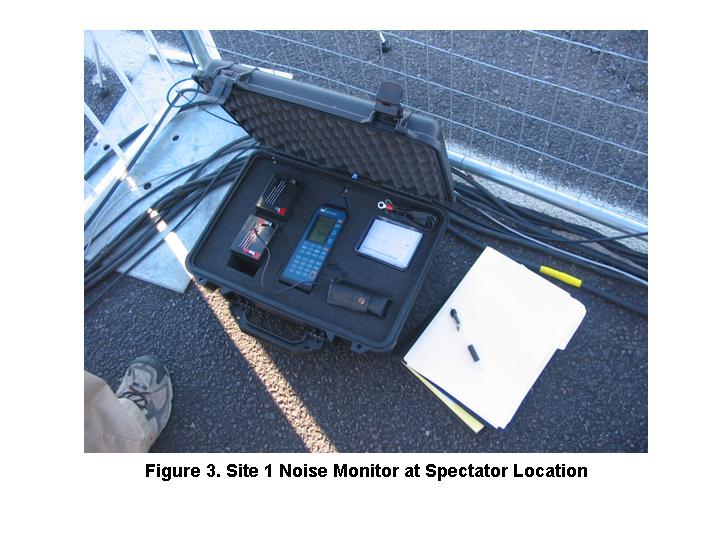
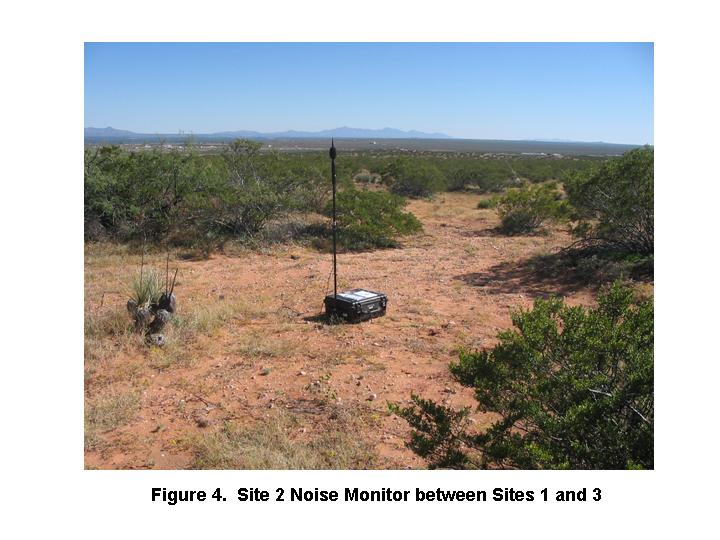
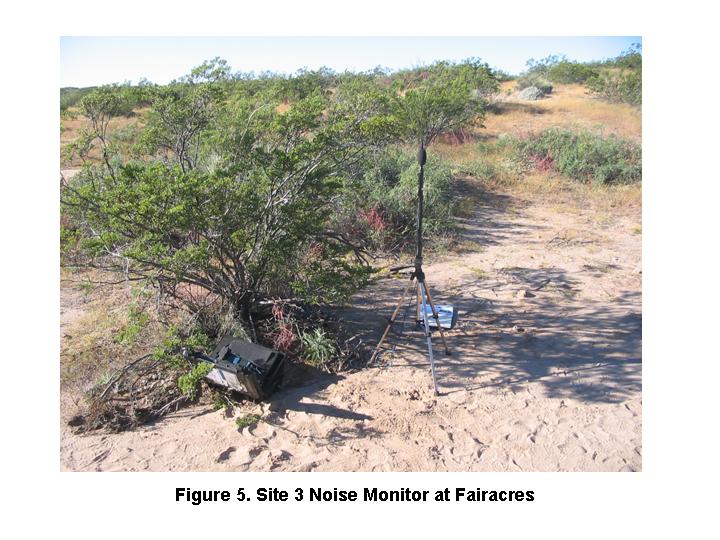
The noise monitors were calibrated prior to and after the measurements and were programmed to collect one minute Level Equivalent (Leq) values over the course of the two days of noise measurements. The one minute time interval was selected so that individual rocket events could be later segregated from the total noise exposure. Many other statistical noise metrics are also stored in the data files for subsequent processing, if needed. Please note that maximum A-weighted noise levels can be much higher than the one minute Leq value.
Figures 6, 7, and 8 show the measured noise levels at Sites 1, 2, and 3 over the course of the two day event.

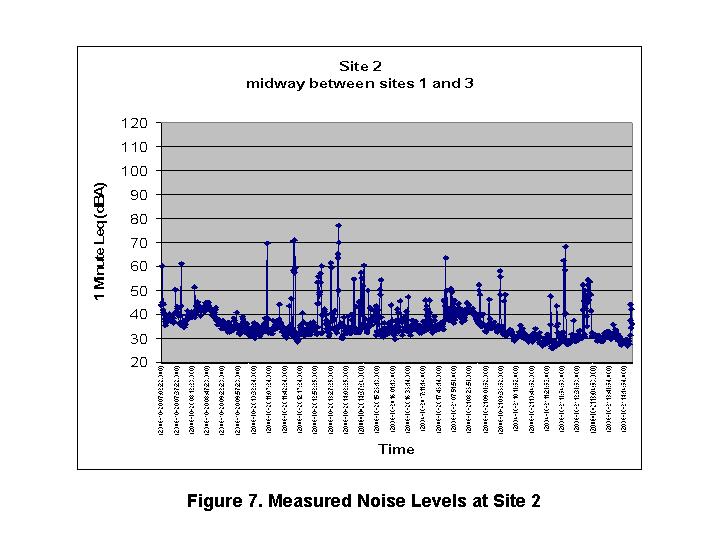
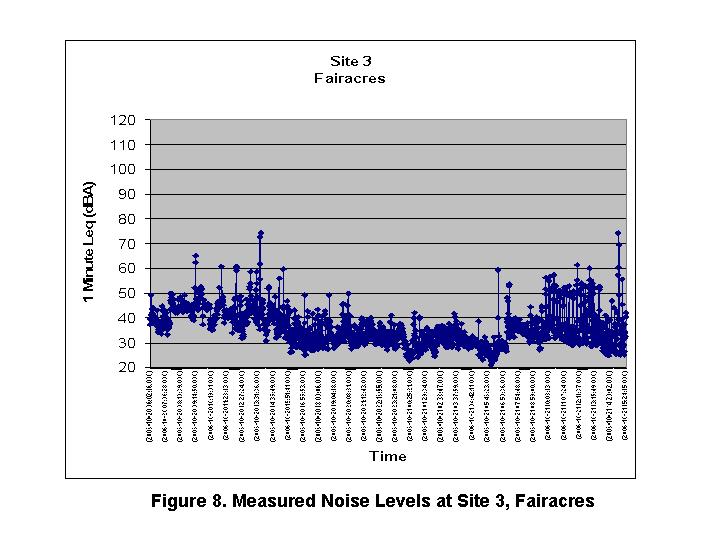
Site 1, Spectator Area
Noise levels were continuously monitored during event activities which occurred between 7:30 and 14:00 on both days. One minute Leq values at the spectator area ranged from 56 dBA to 108 dBA. The lower value represents the background ambient noise (mainly caused by spectator activity) level during the day. The higher value was caused by a rocket jet pack which was propelling its operator relatively close to the spectators. The maximum noise level during that minute was 120 dBA, which is at or near the threshold of pain. With the exception of one military aircraft flyover, all the measured noise levels in excess of 100 dBA were due to rocket jet pack noise. Another notable noise event included a Tripoli rocket launch at 11:00 on 10-20-6 which produced an Leq of 87 dBA.
The typical noise level of 70 dBA, shown as a cluster of data points spanning the two days, was caused by continuous music and announcements played back through the sound system. Speech interference starts to occur at 65 dBA, so the sound system noise alone made speech communication difficult. The overall daytime Leq at this site was 81 dBA. OSHA’s 8 hour time-weighted hearing damage threshold is 85 dBA, so while hearing damage is unlikely in this environment, noise levels were close to this standard. However, OSHA 1019.95 specifies that the noise exposure limit of 15 minutes or less is 115 dBA. The rocket jet pack noise, at 120 dBA, was in excess of this limit and therefore there is a risk of hearing damage at this level.
Site 2, Midway between Site 1 and 3
Noise levels were continuously monitored at this site over the two day event. However the monitor stopped recording data at 14:39 on 10-20-06 due to its memory being full. It was restarted again at 7:28 the next morning. Noise levels ranged from 25 dBA to 77 dBA. The higher value was due to a military aircraft flyover. The lower value represents a very quiet area, and is typical for an uninhabited desert area. The peaks shown in Figure 7 are essentially all related to Xprize noise events. This data could be used, at a future date, to calculate attenuation rates of various rocket launch activities.
Site 3, Fairacres
Figure 8 shows measured noise levels near 8125 Constitution Street in Fairacres between 6:04 on 10-20-06 and 15:27 on 10-21-06. Measured levels ranged from 22 dBA to 74 dBA. Some of the peaks shown in Figure 8 are due to Xprize activity; however noise from construction of a new home in the vicinity of this site also caused some of these peaks.
Potential Noise Impacts
The FAA significant impact threshold is an increase in 1.5 dB or more from a baseline of a Day Night Average Noise Level (DNL) of 65 dBA (FAA Order 1050.1E). The DNL is essentially a 24 hour average noise level with a 10 decibel penalty for noise occurring at night. This penalty accounts for people’s increased sensitivity to noise at night. The data in Figures 6 -8 were converted to DNL values. Since no nighttime data were collected at Sites 1 and 2, nighttime data from Site 3 was used in the calculation for all three sites. The results of this analysis are shown in Table 1.
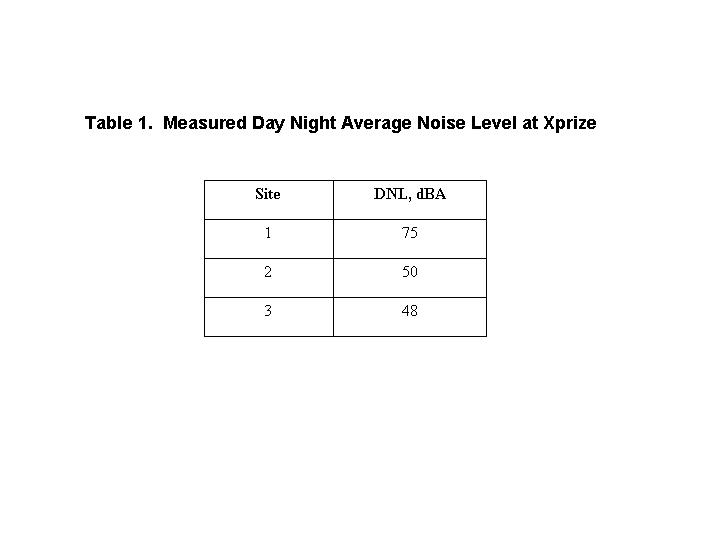
The Las Cruces Airport Master Plan indicates that the existing noise level due to aircraft activity at Site 1 is 70 DNL (annual average). Assuming two days per year of Xprize generated noise, the annualized measured 75 DNL would become 53 DNL. Since this would not increase the existing 65 DNL contour by 1.5 dBA, there would be no impact according to FAA Order 1050.1E. The same conclusion can be drawn for Sites 2 and 3 since Xprize generated noise at these sites is much lower than at Site 1.
Recommendations
Since the Xprize event in its current configuration and duration of days does not cause a significant noise impact, no mitigation of noise is required from an environmental noise and land use planning perspective. However, the rocket pack demonstration is causing noise levels in excess of OSHA hearing conservation limits. Consequently, we recommend that this demonstration be moved farther away from the people. Since noise from this source has an attenuation rate of 6 dB per doubling of distance from the source, increasing the distance of the rocket pack by a factor of two from the spectators would likely reduce this noise to acceptable levels. In addition, hearing protection should be made available to spectators. There may be other activities at this event where spectators would benefit from hearing protection.